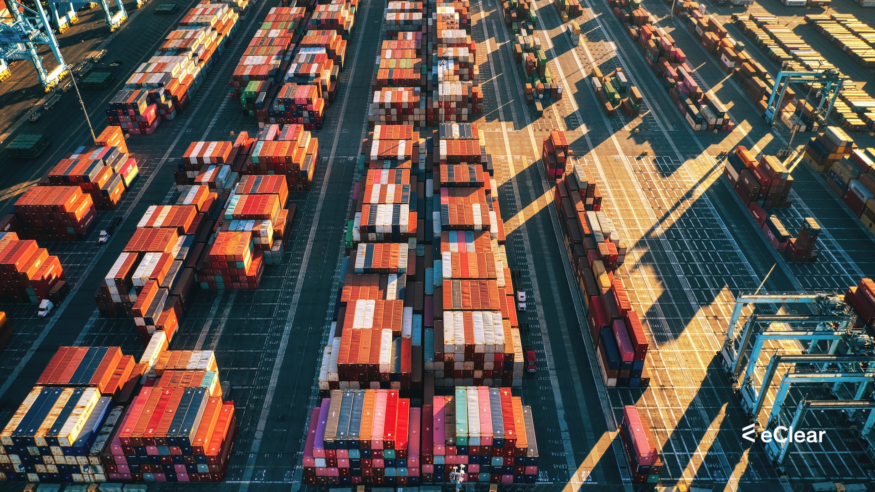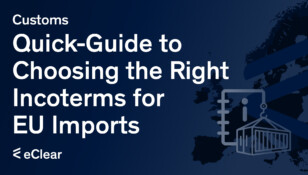Advanced technologies such as Blockchain, IoT, Big Data, AI, and machine learning are revolutionising cross-border trade, with organisations like the World Customs Organisation (WCO) and the World Trade Organisation (WTO) actively exploring their potential. These technologies can help customs administrations streamline operations and ensure safety, security, and fair revenue collection. The WCO and WTO have long-standing partnerships, with their cooperation focusing on customs valuation, rules of origin, and trade facilitation. The Study Report on Disruptive Technologies (WCO, 2022) highlights how these technologies transform customs procedures.
Artificial intelligence to simplify customs processing
The distinction between artificial intelligence, machine learning and deep learning
Artificial intelligence, encompassing machine learning and deep learning, is a powerful tool in the customs classification of products. Machine learning facilitates automatic learning from experience and data.
In contrast, deep learning, a specialised subset of machine learning, employs neural networks to detect intricate patterns within data. Previously, fuzzy match and decision tree logic were used to tackle customs classification challenges. However, these methods encountered limitations when dealing with complex or novel products. The latest deep learning technology offers a comprehensive and automatic approach to product classification, surpassing the capabilities of fuzzy matching and decision tree solutions. By leveraging proprietary AI models and high-quality data sources, deep learning enables AI to generalise underlying concepts and rules while understanding correlations, leading to improved accuracy in pricing.
Introduction to Large Language Models

In artificial intelligence, Large Language Models (LLMs) such as OpenAI’s GPT-4 and Google’s BERT have been making considerable strides, ushering in a new era of innovation across many industries. Customs agencies worldwide stand to reap the rewards of LLMs’ capabilities, which promise to streamline operations, bolster security, and expedite international trade.
Language Models: A Brief and Evolving History
Pre-2000s: Traditional Language Models
Traditional language models, such as n-gram models, have existed for decades. However, they need help with issues like the curse of dimensionality and sparsity, which limit their effectiveness in generating coherent text.
The mid-2000s: Deep Neural Networks for Language Modelling
In 2007, Geoffrey Hinton’s advancement in training neural networks enabled the development of deeper networks, improving language models by representing nuanced concepts and handling unseen sequences. However, these models still lacked coherence relative to the input sequence.
Early-2010s: LSTM Networks Gain Traction
Long Short-Term Memory (LSTM) networks, introduced in 1995, gained popularity in the 2010s for their ability to process arbitrary-length sequences and dynamically update internal states. Despite their improvements, LSTMs struggled with long-term dependencies and sequential processing.
The late-2010s: Transformers Revolutionise NLP
In 2017, Google introduced Transformer networks with the paper “Attention Is All You Need,” vastly improving natural language processing. Transformers are parallelisable, efficient to train, and utilise attention mechanisms to emphasise specific input parts. However, they have fixed input and output sizes with quadratic computation increases.
The 2020s: The Rise of GPT Models
Generative Pre-trained Transformers (GPT) emerged as a dominant force in language modelling, with OpenAI’s GPT-3 displaying state-of-the-art results without fine-tuning. In 2022, OpenAI introduced InstructGPT, improving instruction-following and reducing toxicity using Reinforcement Learning from Human Feedback (RLHF).
OpenAI, Meta, Google, and the open-source research community have contributed various large language models, such as OPT, FLAN-T5, BERT, BLOOM, and StableLM. The field is rapidly advancing, with state-of-the-art models and capabilities changing every few weeks.
AI in Action: How LLMs Transform Text Analysis Tasks
In Artificial Intelligence, Large Language Models (LLMs) represent a sophisticated breed of machine learning models adept at natural language comprehension and generation. OpenAI’s GPT-4 and Google’s BERT are prime examples of LLMs that have made substantial inroads in advancing the field. These models thrive on processing copious volumes of textual data, discerning patterns, and grasping the subtleties inherent in human language. LLMs excel at sentiment analysis, text summarisation, and language translation tasks by training on extensive and diverse datasets and refining their abilities.
The crux of LLMs lies in deploying neural networks and algorithms that empower them to produce contextually relevant and coherent text based on the input they receive. The efficacy of LLMs stems from their ability to process and generate human-like language, rendering them invaluable across many industries. Their applications encompass the automation of customer service in retail, support for medical diagnosis and drug discovery in healthcare, and the enhancement of natural language processing tasks in sectors such as finance and law.
Customs tariff challenges for international e-commerce

Online merchants face numerous practical hurdles in customs tariff classification, such as outdated wording, countless cross-references, different interpretations, slow legal development, and confusing legal sources. In addition, missing product information and poor product descriptions can make goods identification difficult.
The Role of Large Language Models in Customs
Adopting Large Language Models (LLMs) in customs can change thinking about operations. One crucial aspect of this transformation lies in automating document processing. LLMs can efficiently classify various forms, extract pertinent information, and offer multilingual support, thereby streamlining the handling of voluminous paperwork that often accompanies cross-border trade.
Moreover, LLMs are poised to enhance communication and collaboration between customs agencies and international counterparts. They facilitate real-time language translation, enabling seamless exchanges between diverse stakeholders. Additionally, LLMs can summarise and generate reports, making it easier for decision-makers to access and comprehend essential information. These models contribute to a more collaborative and efficient customs ecosystem by fostering inter-agency communication.
Lastly, LLMs are instrumental in supporting risk assessment and informed decision-making. They identify patterns and trends that may otherwise be obscured by analysing vast datasets. Consequently, LLMs generate actionable insights and recommendations, empowering customs officials to make data-driven decisions that bolster security and facilitate legitimate trade.
Revolution in customs: LLMs increase efficiency and security
Large Language Models are revolutionising customs processing by efficiently classifying and processing documents, supporting multilingualism, and improving collaboration between customs authorities and international partners. LLMs facilitate real-time language translation, generate summary reports, and promote efficient communication for a collaborative customs ecosystem. They are also essential for risk assessment and informed decision-making by identifying patterns and trends in large data sets, providing actionable insights, and enabling data-driven decisions.
There are significant benefits to implementing LLMs in customs. They enable time and cost savings by automating manual tasks, accelerating clearance processes and optimising resource allocation. They also increase the accuracy and consistency of customs processes by minimising human error and standardising information processing. Finally, they strengthen security and compliance in customs through advanced data analytics, identification of suspicious patterns and promotion of collaboration, contributing to a safer and more harmonious trade environment.

Real-world Applications of Large Language Models in Customs
The transformative potential of Large Language Models in customs operations is becoming increasingly evident through numerous real-world applications. Here, we delve deeper into case studies, offering a more comprehensive understanding of their significance.
Case 1: LLM-driven Document Processing at a Major Customs Agency
Implementing LLMs for document processing at customs agencies has revolutionised how officials manage trade-related paperwork. LLMs have been programmed to recognise the structure and format of different forms, swiftly extracting relevant data, and automatically populating corresponding databases. This has substantially reduced processing times, minimising delays, and facilitating smoother trade flows. Additionally, the multilingual capabilities of LLMs have addressed language barriers, making it easier for the agency to process documents from diverse sources.
Case 2: LLM-supported Risk Assessment in Border Control
Border control agencies have turned to LLMs to bolster risk assessment efforts and enhance security measures. LLMs have been integrated into existing security systems, allowing them to analyse passenger and cargo data and other relevant information sources. LLMs can identify potential risks and anomalous patterns through machine learning techniques, flagging them for further investigation. This data-driven approach has significantly improved threat detection capabilities, allowing border control agencies to allocate resources more effectively and prioritise high-risk situations.
Case 3: LLM-powered Communication between International Customs Agencies
Cooperation and information sharing between international customs agencies are vital in facilitating global trade and ensuring compliance with international regulations. LLMs have enabled seamless communication by providing real-time language translation and report generation. These capabilities have allowed customs agencies to overcome language barriers and access crucial information promptly and efficiently. As a result, LLM-powered communication has fostered greater collaboration, paving the way for more secure and well-regulated international trade.
Challenges and Concerns of LLMs in Customs
Despite the transformative potential of Large Language Models in customs operations, their implementation is not without challenges and concerns. Ethical and privacy considerations are paramount, as customs agencies must balance enhancing security and safeguarding individual rights. Ensuring responsible use of LLMs involves transparent and accountable practices, including establishing clear data access and usage guidelines. Moreover, addressing data protection and compliance with international regulations is crucial to maintaining public trust and ensuring LLM-powered customs processes’ legitimacy.
Technical obstacles also pose challenges to the integration of LLMs in customs operations. The successful incorporation of LLMs requires compatibility with existing systems, a process that may necessitate significant adjustments and investments. Maintaining accuracy and reliability in the face of constantly evolving language patterns and ensuring the models are up-to-date with the latest regulations are essential to preserving the effectiveness of LLMs. Furthermore, customs agencies must remain adaptable to the rapid pace of technological advancements, continuously updating and refining their LLM implementations to stay at the forefront of innovation.
The Future of Customs: Embracing AI Innovations

Artificial intelligence is poised to revolutionise the world of customs, unlocking the significant potential for enhanced efficiency, accuracy, and security. Large Language Models hold particular promise in transforming document processing, risk assessment, and inter-agency communication, as evidenced by successful real-world case studies.
However, as with any emerging technology, caution must be exercised in adopting LLMs, considering ethical, privacy, and technical considerations. Customs agencies must remain adaptable, continually refining their LLM implementations and embracing technological innovations to stay at the forefront.
Collaboration between customs agencies, technology providers, and other stakeholders will be vital in harnessing the full potential of LLMs and ensuring their responsible and effective deployment in the customs domain.







